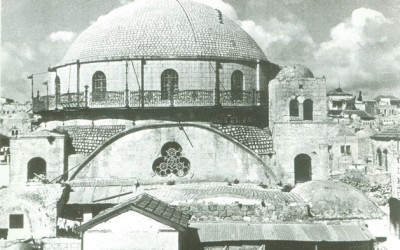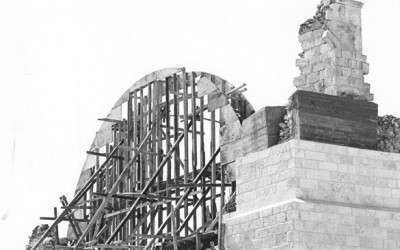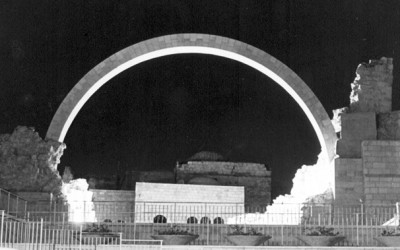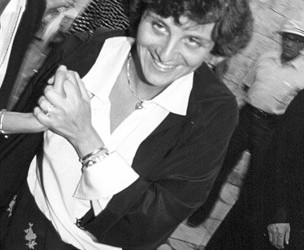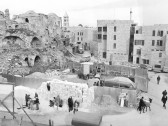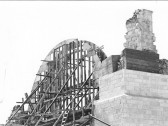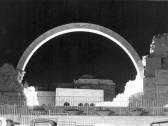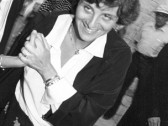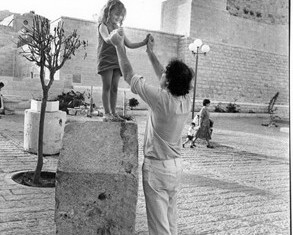About the project
The Hurva (Ruin) Synagogue was the tallest and grandest of the 58 synagogues that stood in the Old City’s Jewish Quarter before 1948.The synagogue was completed in 1864, on the site of the ruined Rabbi Yehuda Hehassid Synagogue (1705). Its construction was made possible through donations from Jews throughout the world and with the help of the Ottoman sultan Abdulmejid, whose chief architect, Assad Bey, designed the building. The synagogue was considered the most important in Jerusalem and was a prominent feature in its skyline, standing out with the Old City’s two other domed structures, the Church of the Holy Sepulchre and the Dome of the Rock. The synagogue was badly damaged by Jordanian shellfire in 1948 and subsequently demolished. Since 1967, when Jews returned to the Jewish Quarter, the Hurva has been the focus of debate about whether to convert it into a war memorial, recreate its 19th Century appearance or rebuild the synagogue in a new design. (From 1967 until his death in 1974, famed American architect Louis Kahn developed three visionary designs for a new Hurva that were never realized.) In 1978, the Jerusalem Foundation supported the development of plans to preserve the site, including stabilization of the building’s remains and construction of a 16-meter-high stone arch that was intended to serve as a reminder of what was destroyed and a symbol of Jewish continuity. In 2006, the arch was removed as work began to recreate the synagogue’s 19th Century appearance.

